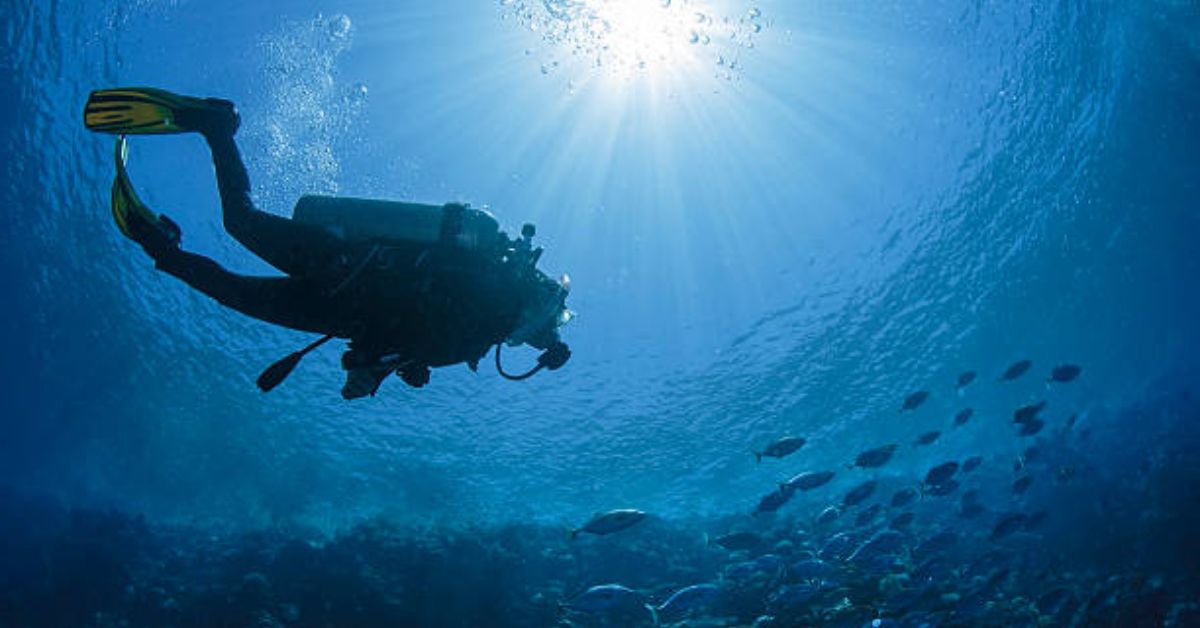The Pacific Ocean is an evergreen love for divers, especially those who adore rich marine life, crystal-clear waters, and cool weather. Peru is a paradise in central and western parts of South America, on the Pacific Ocean’s coast. Scuba diving in Peru is a unique experience because of the Humboldt Current in the ocean here. Coldwater divers enjoy scuba diving at beautiful beaches like Santa Maria and Pucusana. You must wear a thicker wetsuit to stay warm during Diving here as the temperature ranges from 10 to 20 degrees Celsius. During your Diving, you can enjoy playful marine creatures like sea lions, porcupine fish, emperor fish, sea turtles, and colorful butterflyfish. Are you planning for scuba diving in Peru? My guide here will help you with all the essential information to explore underwater wonders and the best Diving Options in Peru.
Is Peru safe for Scuba diving?
Peru is less famous for specifically diving activities. However, dive adventurers come every year to experience scuba diving in Peru, with its unique offering of underwater species and temperatures.
The country is a safe diving destination for all types of diving activities. The Peruvian government promotes dive tourism and ensures the safety of divers visiting the country’s coastal waters.
Diving operators here follow stringent safety protocols. They offer diving activities using high-quality rental gear and experienced well trained divemasters and adhere to international diving standards.
What Are The Water Conditions Like In Peru For Scuba Divers?
Peru’s marine world is different from the other ones. Here, you can experience unpredictable weather, from cool to cold, making the diving experience unique and challenging. Here are the typical water conditions for scuba diving in Peru:
Water Temperature:
- Peru’s water temperatures range from 50°F to 72°F (10°C to 22°C) year-round due to the Humboldt Current.
- From June to October, you can experience the minimum temperatures around 50-59°F (10-15°C).
- In those cases, you must wear a 4to7mm semi-dry wetsuit or drysuit for most dive sites.
Visibility:
- Underwater visibility is excellent, as you can see marine species, with an average visibility of 50-100 feet (15-30 meters).
- Plankton blooms can occasionally reduce visibility to 15-30 feet (5-10 meters).
- January to March is when you can see the most transparent water in the sea.
Currents:
- Currents are generally mild to moderate along the coast.
- Some sites, like seamounts and points, have stronger currents.
- Downwelling currents are common around underwater mountains and islands.
Marine Life:
- The country has the most amazing marine wildlife due to its oxygen-rich Peruvian sea.
- This is why you can see colorful coral reefs, sea lions, and many unique fish species, mollusks, and shellfish.
What Are The Top Water Species To See In Peru?
Here are some of the top water species you can see while diving or snorkeling in Peru:
- Marbled Headstander
- Manta rays
- Mobula Rays
- Spiny catfish
- Sea lions
- Green sea turtles
- Blue-footed booby
- Dolphins
- Whales
- Magnificent frigatebird
What are Best Diving Spots In Peru?
1. Tumbes:
During ancient times, the beaches of Tumbes were famous for fishing and hunting. These Beaches are comparatively warmer than other beaches in Peru, making them perfect for snorkeling and Diving in this region. Some famous spots where you can go scuba diving in Tumbes are Máncora, Organos, and Punta Sal. During the visit, you can expect to see water species like whales and sea turtles. These beaches are white sand beaches where you will hardly see any crowd, making them the best diving places in Peru.
2. Piura:
Scuba and snorkeling in Piura city is always an exceptional experience. Piura city hai has beautiful beaches especially for the different water activities. You can easily spot water species like butterflyfish, octopus, brightening angelfish, water spiders, crustaceans, and a variety of mollusks here. Places like Talara, Islas Rocas, Los Organos, and Bayóvar are famous for diving activities.
3. Ancash:
This city in Peru has cold water beaches where you can experience less visibility. but as you go deep into the sea, you will see things with better visibility. Due to the cold temperature, wearing at least 3mm thick wetsuits and thoroughly covering your body is recommended to avoid health complications. Spots like Tortugas, Casma, and Huarmey are favorites for Diving, snorkeling, and spearfishing. You might witness vibrant coral reefs, manta rays, sea turtles, and various tropical fish species.
4. Lima:
Ancón, Pucusana, San Bartolo, and Isla Asia come under the lima’s coastal areas. Divers love doing scuba and other water activities here as cold water makes it adventurous to dive in. You can spot diverse marine life, including sea lions, dolphins, rays, and colorful reef fish. You can visit Pucusana Beach for a kelp forest diving experience. Water temperatures range from 10°C to 20°C here. The best time for Diving is during the summer months, i.e. from December to April, when you can feel good visibility with the calm sea.
5. Arequipa:
Matarani is one of the famous places in Arequipa for Diving, as the clear water here gives an HD view of marina life in the sea. Angel sharks, sea turtles, schools of fish, and many other sea creatures may welcome you as you dive into the underwater world. The best sight is seeing sea lions swim by your side. They are playful and curious, making the experience unique.
6. Callao:
Islas San Lorenzo and Frontón are diving hubs in Peru where you can explore marine wildlife. Swimming with the sea lions is the best part of diving here. Try to plan your dive during good sunlight for excellent visibility. If you are a beginner diver planning any diving activities in Peru, I recommend you find the best travel agency for your Peru trip. They can plan scuba diving or any other water activities, ensuring you make the most out of your journey.
